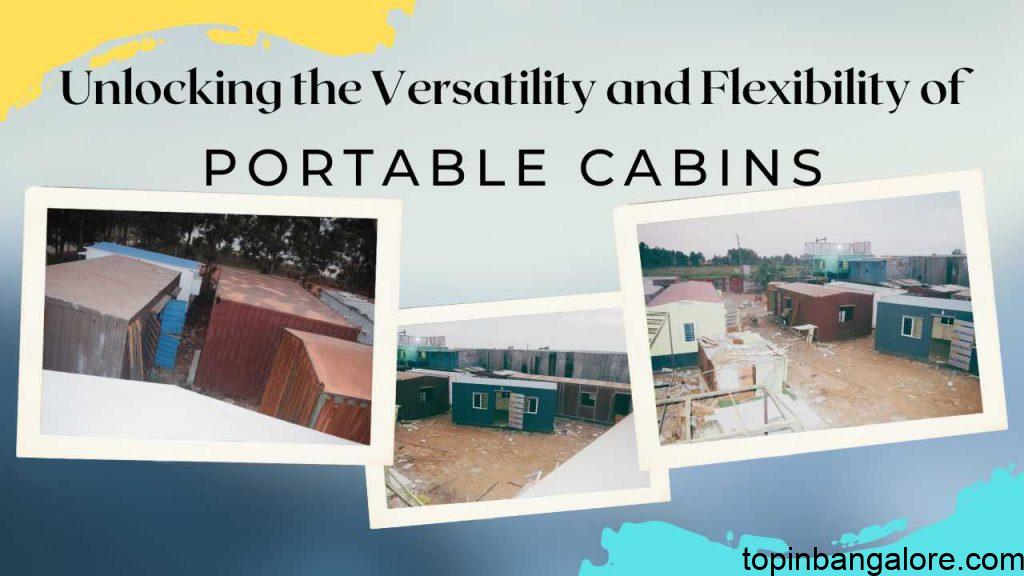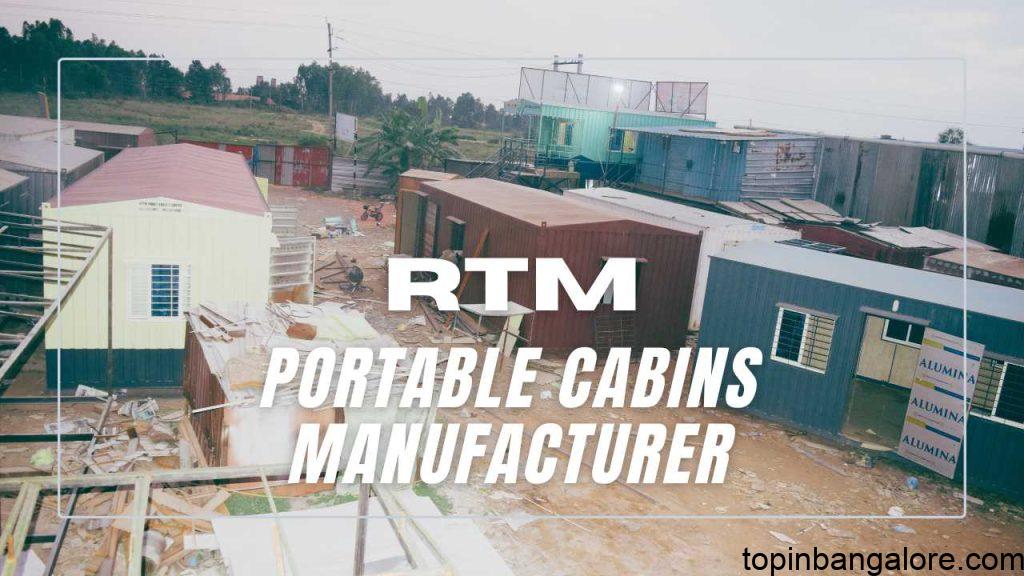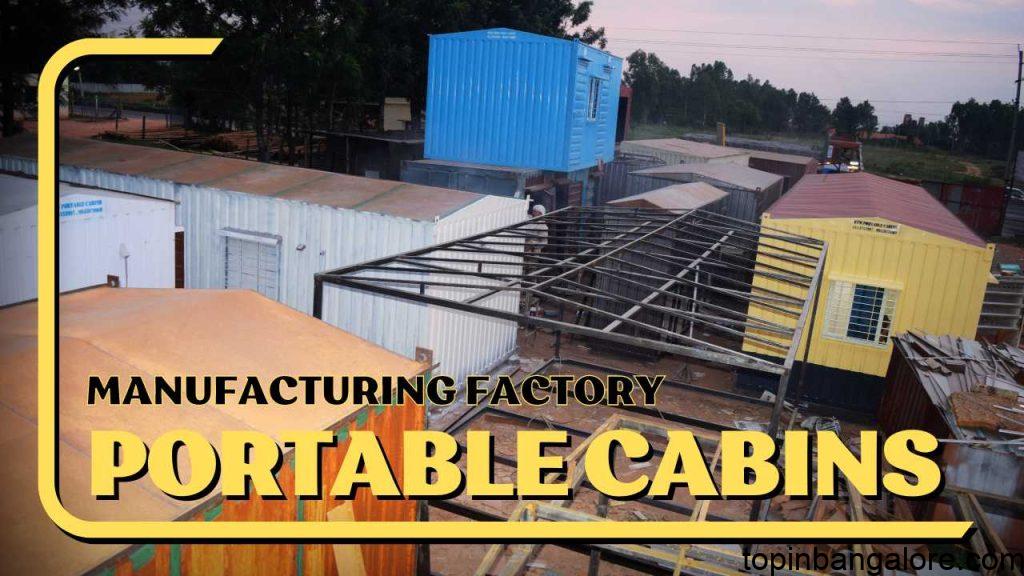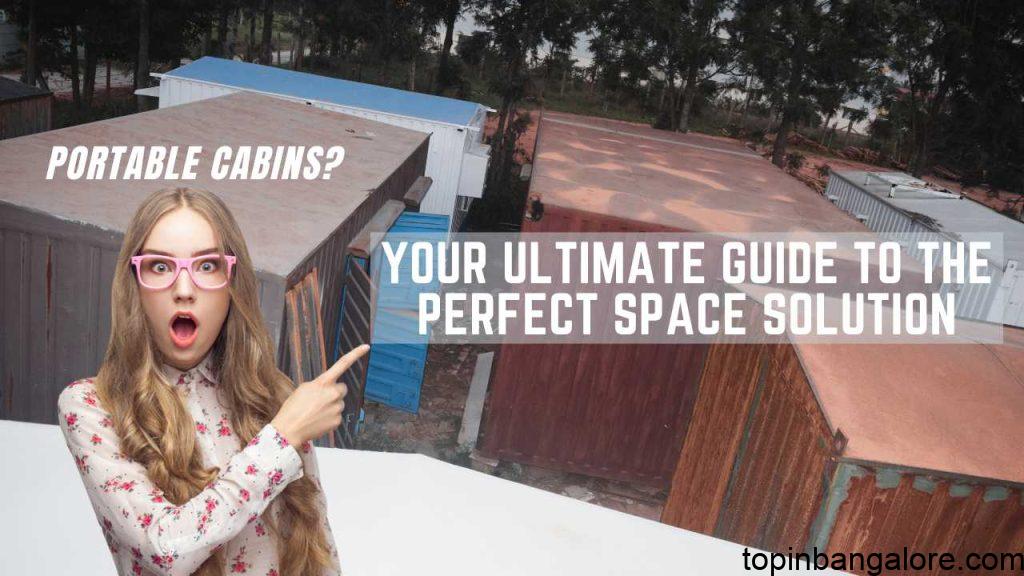Portable Cabins: Your Ultimate Guide to the Perfect Space Solution
Welcome to the world of portable cabins, where versatility and practicality meet the diverse needs of different industries. Whether you’re seeking a standard cabin or a specialized one, this comprehensive introduction will take you on a journey through their design, transportation, customization options, and maintenance. Dive into the regulations that govern them, consider the cost factors, and explore inspiring case studies. And don’t forget to catch a glimpse of the exciting future trends that promise even more innovation in this field. With portable cabins, you’ll find the perfect solution for your temporary or permanent space requirements, tailored to your unique needs. Get ready to unlock the potential of portable cabins and embark on a new era of flexible and efficient spaces.
Also Read: Portable Cabin Manufacturers in Bangalore: RTM Portable Cabins Hoskote-Malur Road, Karnataka

Introduction to Portable Cabins
Portable cabins are versatile structures that serve various purposes in different industries. These prefabricated buildings are designed to be easily transported and installed at different locations. They offer a convenient and cost-effective solution for temporary or permanent space requirements, ranging from offices and accommodations to storage facilities and specialized applications.
Types of Portable Cabins
There are several types of portable cabins available to cater to different needs. Standard cabins provide basic functionality, while office cabins are equipped with amenities for a comfortable working environment. Accommodation cabins offer living spaces with sleeping quarters and sanitary facilities. Storage cabins are designed to store equipment or goods securely. Specialized cabins are customized for specific purposes, such as medical clinics, classrooms, or laboratories.
Design and Construction of Portable Cabins
Portable cabins are built with durable materials and designed for easy assembly and disassembly. They consist of structural components like steel frames and insulated wall panels. Insulation and climate control systems ensure comfort in various weather conditions. Electrical and plumbing systems are integrated, providing necessary amenities. Flooring, walls, and ceiling materials are chosen for durability and aesthetics. Exterior finishes protect the cabin from external elements.

Transportation and Installation
Mobility is a key feature of portable cabins. They can be transported to different sites using trucks or trailers designed for easy movement. Prior to installation, the site needs to be prepared, and a suitable foundation is required. The assembly process involves connecting the different sections of the cabin, securing them in place, and hooking up necessary utilities. Once installed, portable cabins are ready for use.
Customization Options for Portable Cabins
Portable cabins can be customized according to specific requirements. Interior layouts can be adjusted to accommodate different needs, such as partitioning for separate rooms or open spaces. Furniture and fixtures can be added to enhance functionality and aesthetics. Security features like locks and surveillance systems can be incorporated. Exterior modifications, such as ramps or additional entrances, can be made to improve accessibility.
Maintenance and Upkeep of Portable Cabins
Regular maintenance is essential to ensure the longevity and optimal functioning of portable cabins. Cleaning and sanitation practices keep the cabin hygienic. Repairs and replacements of damaged components should be carried out promptly. Pest control measures help prevent infestations. Upgrading and renovation can be done to enhance the cabin’s features and adapt it to changing needs.
Regulations and Codes
Portable cabins are subject to various regulations and codes depending on the location and purpose. Building codes and permits ensure compliance with safety standards and structural requirements. Zoning and land use regulations determine where portable cabins can be installed. Safety and accessibility standards address issues like fire safety, emergency exits, and accessibility for people with disabilities.
Cost Considerations
When considering portable cabins, cost factors need to be taken into account. Comparing the costs of purchasing versus renting is important. Pricing factors include cabin size, customization options, quality of materials, and additional features. Budgeting and financial planning are necessary to determine the feasibility and affordability of acquiring a portable cabin.
Case Studies and Examples
Case studies and examples showcase the practical applications of portable cabins. In the construction industry, portable cabins serve as on-site offices and accommodations for workers. They are also utilized for events and exhibitions, providing temporary spaces for vendors and visitors. In remote locations, portable cabins offer living and working facilities for research teams, oil rig workers, or emergency response teams.
Future Trends and Innovations in Portable Cabins
The future of portable cabins is marked by advancements in sustainability, technology integration, and modular designs. Sustainable materials and energy-efficient systems reduce environmental impact. Integration of smart technologies enhances cabin functionality and connectivity. Modular and expandable designs allow for easy customization and scalability.

Portable cabins offer a flexible and practical solution for various space requirements. Their mobility, ease of installation, and customizable features make them ideal for temporary or permanent use in diverse industries. Understanding the different types, design considerations, transportation methods, and customization options can help individuals and businesses make informed decisions when choosing portable cabins. By adhering to regulations and considering cost factors, portable cabins can provide a cost-effective and efficient solution to meet specific needs. As the industry continues to innovate, future trends indicate a focus on sustainability, technology integration, and modular designs, further enhancing the functionality and versatility of portable cabins.
FAQ about Portable Cabins
A porta cabin, also known as a portable cabin, is a prefabricated structure that can be easily transported and installed at different locations. It serves various purposes, such as offices, accommodations, storage units, or specialized facilities, providing flexible and temporary space solutions.
Porta cabins are typically constructed using a combination of materials to ensure durability and functionality. Common materials include steel or aluminum frames for structural support, insulated panels for walls, roofs, and floors, PVC or vinyl flooring, and various options for exterior finishes such as metal cladding or wood siding.
The benefits of portable cabins include their mobility, ease of installation, and versatility. They can be quickly transported and set up at different sites, providing instant space solutions. Portable cabins are cost-effective compared to traditional construction, customizable to meet specific needs, and can be easily expanded or relocated as required.
Porta cabins come in various sizes, ranging from small units suitable for single-person offices or storage, to larger cabins that can accommodate multiple rooms or serve as spacious work environments. The sizes typically depend on the purpose and specific requirements of the user.
The ownership of a porta cabin can vary. It can be owned by individuals or businesses who require temporary or mobile space solutions. Porta cabins are also provided by rental companies or manufacturers who offer them for lease or sale.
Another word for porta cabin is “portable cabin.” Both terms refer to the same type of structure.
The term “porta” is derived from the Latin word “portare,” which means “to carry.” In the context of porta cabins, it signifies the mobility and transportability of these structures.
A small cabin is often referred to as a “cottage,” “cabinette,” or “cabin retreat.” These terms emphasize the cozy and intimate nature of the smaller-sized cabin.
The term “cabin” originates from the Old French word “cabane,” which means a small shelter or a hut. It is called a cabin because historically, cabins were simple, small structures used as shelters or dwelling places in rural or remote areas.
Cabin types refer to the different variations or categories of cabins available. This can include standard cabins, office cabins, accommodation cabins, storage cabins, or specialized cabins designed for specific purposes such as classrooms, medical facilities, or laboratories.
While both bungalows and cabins are small, single-story structures, they have distinct architectural characteristics. Bungalows typically have a more permanent construction and are associated with a specific architectural style, often featuring a low-pitched roof and a veranda. Cabins, on the other hand, are generally simpler in design and are traditionally associated with rural or rustic settings.
A cabin is a small, often rustic or cozy, dwelling typically found in natural or remote settings. It provides shelter and basic amenities for individuals or small groups, serving as a retreat or temporary living space.
Another word for cabin is “hut,” “shack,” “lodge,” or “cottage.” These terms can be used interchangeably in some contexts, depending on the region and specific architectural features of the structure.
A chalet is a type of traditional Alpine dwelling, typically made of wood and characterized by a cozy, rustic design. While both chalets and cabins share similarities in terms of their smaller size and natural surroundings, chalets are often associated with mountainous regions and are known for their distinctive architectural style, featuring sloping roofs, large windows, and spacious interiors. Therefore, while a chalet can be considered a type of cabin, it has its own unique characteristics that set it apart.
A cabin is a specific type of house that is typically small in size and designed to provide a rustic, cozy, and often remote retreat. Cabins are commonly found in natural or wilderness settings, such as forests, mountains, or lakesides. They are often constructed with natural materials like wood and stone, reflecting a simpler and more traditional architectural style. Cabins offer a peaceful escape from urban life and are cherished for their connection to nature and the outdoors.
A cabin serves as a charming and cozy dwelling or retreat, offering a haven of shelter and basic amenities. Its purpose is versatile, catering to various needs such as a peaceful vacation getaway, a rustic hunting or fishing lodge, a temporary living space during renovations or construction, or even a permanent residence nestled in the tranquility of natural or remote settings.
When it comes to the size of a cabin, it exhibits a wide range that is largely determined by its intended use and the preferences of its occupants. Cabins can span from modest single-room structures, providing a compact yet comfortable space, to more expansive designs encompassing multiple rooms and additional living areas. The size of a cabin is intricately linked to its functionality, accommodating the specific requirements and desires of its inhabitants.
Let’s delve into an example of a cabin to paint a vivid picture. Imagine a small wooden cottage harmoniously nestled amidst the lush greenery of a forest. This idyllic cabin boasts a warm and inviting interior adorned with exposed beams, a crackling fireplace exuding coziness, and charming rustic furnishings that exude timeless charm. Outside, a quaint porch entices you to relax and bask in the serenity of nature. On the other hand, a modern cabin could captivate with its sleek architectural design, large panoramic windows showcasing breathtaking views, and contemporary amenities that seamlessly blend comfort and style, creating an enchanting living experience.
Within a cabin, we encounter the concept of a cabin room—a designated space or area that serves a specific function. This room can encompass a single multipurpose area serving as a living space or bedroom, or in larger cabins, there may be multiple rooms thoughtfully designed for distinct purposes. These purposes can include sleeping quarters providing restful havens, a well-appointed kitchen where culinary delights are concocted, a bathroom offering essential facilities, or even a common gathering area that fosters social interactions and shared memories.
Moving beyond the cabin itself, the notion of a cabin area comes into play. This term refers to the encompassing region or location where cabins are situated. It could be a designated area within a resort or a community where multiple cabins are harmoniously clustered together, creating a charming and interconnected neighborhood. Within the cabin area, residents or guests may enjoy shared amenities, such as common recreational facilities like swimming pools, sports courts, or hiking trails. Additionally, ample parking spaces are often provided, allowing convenience for cabin dwellers. Furthermore, the cabin area may boast close proximity to captivating natural attractions, granting easy access to scenic landscapes, serene lakes, or invigorating hiking trails.
When we talk about a cabin structure, we delve into the physical construction and architectural design that forms the very essence of a cabin. The cabin structure encompasses the foundational framework, sturdy walls, reliable roof, and the overall layout that defines its character. A variety of materials, such as timber, stone, or metal, may be utilized to construct the cabin, each lending its own unique aesthetic and durability. The cabin structure also considers essential features for comfort and functionality, including insulation to regulate temperature, well-placed windows to invite natural light and offer picturesque views, doors to ensure security and privacy, as well as other elements that contribute to a seamless integration of indoor and outdoor living.

In essence, a cabin represents a tranquil retreat, offering respite from the hectic pace of modern life. With their charming allure and practicality, cabins hold a special place in our hearts, allowing us to connect with nature and create lasting memories in a space uniquely designed for comfort, relaxation, and rejuvenation.





